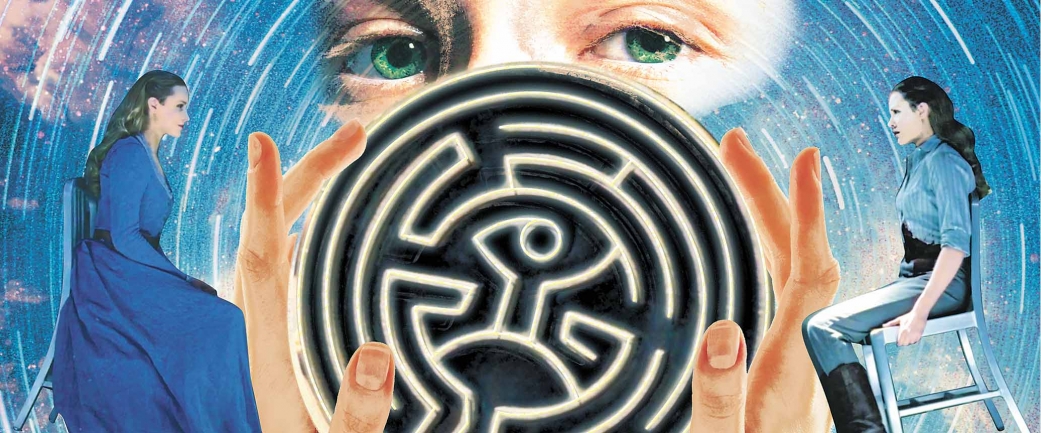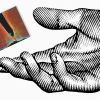
How the teachings of a legendary Buddhist master resonate in popular culture today
As I was working on the exhibition The Second Buddha: Master of Time and thinking about how the past shapes our present and future, I was captivated by Westworld, the HBO television series. I was struck by how the ideas explored in Westworld resonate with big existential questions addressed in Buddhism, including the interconnected nature of the past, present, and future, a core concept of the The Second Buddha.
The exhibition focuses on the legendary Indian Buddhist master Padmasambhava, an important figure in Tibetan Buddhist culture. He is known as the Second Buddha, as he is thought to have introduced Buddhist teachings to Tibet in the eighth century. Padmasambhava is also credited with concealing his teachings as treasures, called terma in Tibetan, throughout the Himalayas in caves, within solid rock, under pillars in temples, in statues, and even in the minds of his disciples. He intended for his reborn disciples to discover these treasure teachings in the future when they were most needed and the circumstances for their discovery were ripe. These teachings, like a source code, permeate the Himalayan landscape. They can be retrieved only by those who have access to the “source code” through a prior karmic connection with the source of the teachings—Padmasambhava—and the teachings themselves. The so-called treasure revealers then master these teachings and practices and share them with others.
I set out to conceptualize the rich but complicated narratives about Padmasambhava from traditional Tibetan Buddhist culture and present them to our twenty-first-century visitors. I wanted to make connections to the stories from the twelfth-century literature and the visual materials dating to the thirteenth through nineteenth centuries relatable to those unfamiliar with them. With these thoughts in mind, I watched the narratives of Westworld unfold and saw that the notion of existence presented in the series is comparable to the Buddhist perspective on existence and reality. One important connecting point is the Buddhist belief that a human life is part of a much greater continuity of lives that includes numerous past and future lives, not just the current one.
Westworld is set in a Wild West–themed high-tech fantasy world that perfectly approximates reality, where wealthy guests go to engage their alternate personalities as players and interact with the android hosts who are part of this created world. (Warning to those who haven’t yet seen the show’s first season: spoilers lie ahead.) The main character, Dolores, is an android, though she believes she is human. Although this point is essential to the show’s premise, I am more interested in the fact that Dolores had a previous existence as a different version of herself, which she is trying to remember. Dolores struggles to remember her past, as she is programmed to experience her life in the park over and over again, forgetting each time it begins anew. This cycle is similar to living out your karma until this karma is exhausted and something new develops, or a new state of consciousness begins. In her monologues Dolores often talks about a path, saying that everyone has one. This notion is in sync with the Buddhist view of human existence.
Dolores’s journey serves as an allegory for a person searching for a former identity to understand who she is now and what she is meant to do. Moments of recollection, like flashes of memory—one might call them visions—aid her progress in remembering and learning who she is. The question of identity is her driving force, and only by remembering her past life can she understand herself and move forward.
Over the course of the show, compelled by external and internal circumstances and guided by visions, Dolores searches for a maze. By discovering it, she learns who she once was. This story powerfully connects to the stories of Padmasambhava’s reborn disciples searching for his hidden treasure teachings. Like Dolores the treasure revealers have visions; often these are glimpses of their previous lives as Padmasambhava’s disciples, and they learn they are meant to find terma, the hidden treasure teachings. External and internal circumstances shape their lives. They have to accept the imperative to search for terma and embark on journeys of self-discovery and terma revelation.
Dolores’s visions eventually bring her to a place she remembers, where she finds and unearths the maze. It turns out to be a simple child’s toy, a small handheld maze with a rolling pinball. When she holds it, the object unlocks her memory, and she remembers her previous existence and past experiences. In that moment everything changes. Her revelation alters her present and ultimately the future of this world. The maze is the key that unlocks her mind, similar to a found terma that unlocks the past life experiences of a treasure revealer, who then makes the discovered teachings accessible to current and subsequent generations, affecting both the present and the future.
This structure for a quest—remembering the past to change the future—is a known plot device in science fiction literature and movies. For example, Paycheck, the 2003 film based on Philip K. Dick’s short story, draws on this concept. The protagonist, Michael Jennings, is hired to build a machine that can predict the future, but he must work in total isolation and commit to erasing his own memory once the project is complete to protect the technology. Just before finishing his work he glimpses the terrible outcome his employers will bring about by using this machine. Knowing what the future holds, Jennings sets out to prevent this catastrophe. He sends himself an assortment of seemingly random items to be delivered after his memory is wiped out. The plot is a bit more intricate, but these simple items—a paperclip, gum, a fortune cookie, and others—unlock his memories and guide him to use each object at the right moment. He avoids a series of fatal encounters, gains a new, better life for himself, and changes the future for everyone. Like the treasure revealers who discover terma at the times they are needed, remembering his past changes the present and enables a different future.
These two examples from contemporary visual culture and the stories of Padmasambhava and his treasure revealers from Tibetan culture illustrate the notions that the past, present, and future are interconnected and we can influence the future, demonstrating that these ideas are part of our shared thinking and perspectives on existence. While the past gives us a sense of perspective that helps situate us in the now, everything we do is really about the future.
Learn more about Padmasambhava and his hidden treasure teachings at the Rubin Museum’s exhibition The Second Buddha: Master of Time, on view February 2, 2018–January 7, 2019.
About the Contributor
Elena Pakhoutova is a curator of Himalayan art at the Rubin Museum of Art and holds a PhD in Asian art history from the University of Virginia. She has curated several exhibitions at the Rubin, including The All-Knowing Buddha: A Secret Guide, with Karl Debreczeny; Collecting Paradise: Buddhist Art of Kashmir and Its Legacies; Nepalese Seasons: Rain and Ritual, with Gautama Vajracharya; and The Second Buddha: Master of Time.






Thank you for this essay, Elena. I’m always looking for examples of Buddhist themes in contemporary pop culture, beyond the wonderful Groundhog Day. We’re huge fans of Westworld and it will be more enjoyable watching it through this new lens. We heard Sakya Trichenspeak about Padmasambhava last week and so are more familiar with the stories you’ve written about.